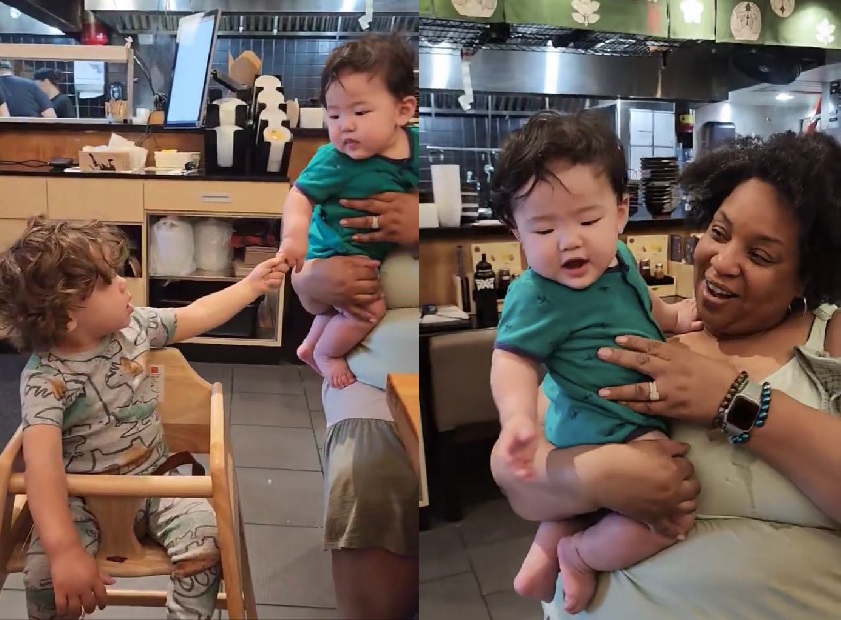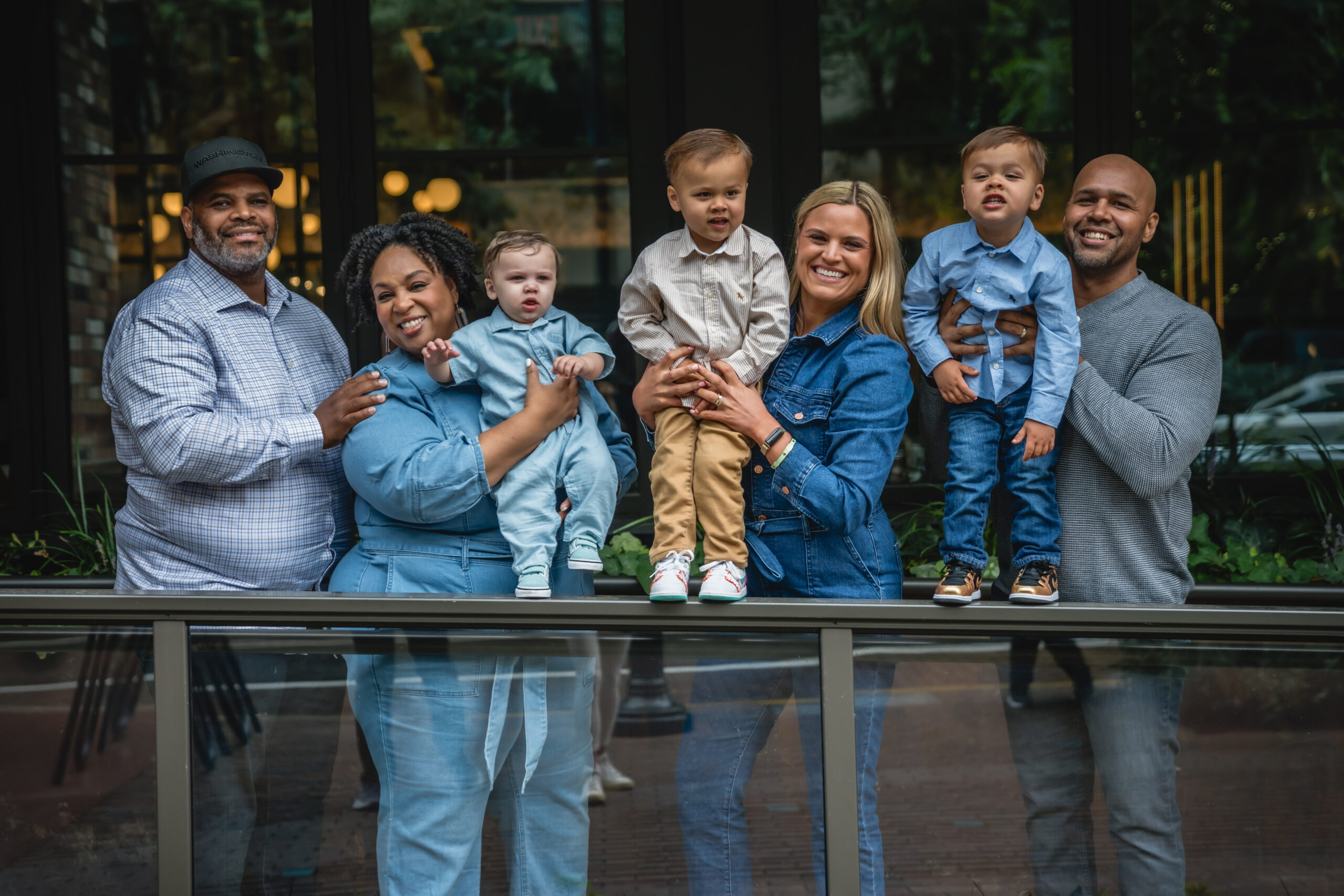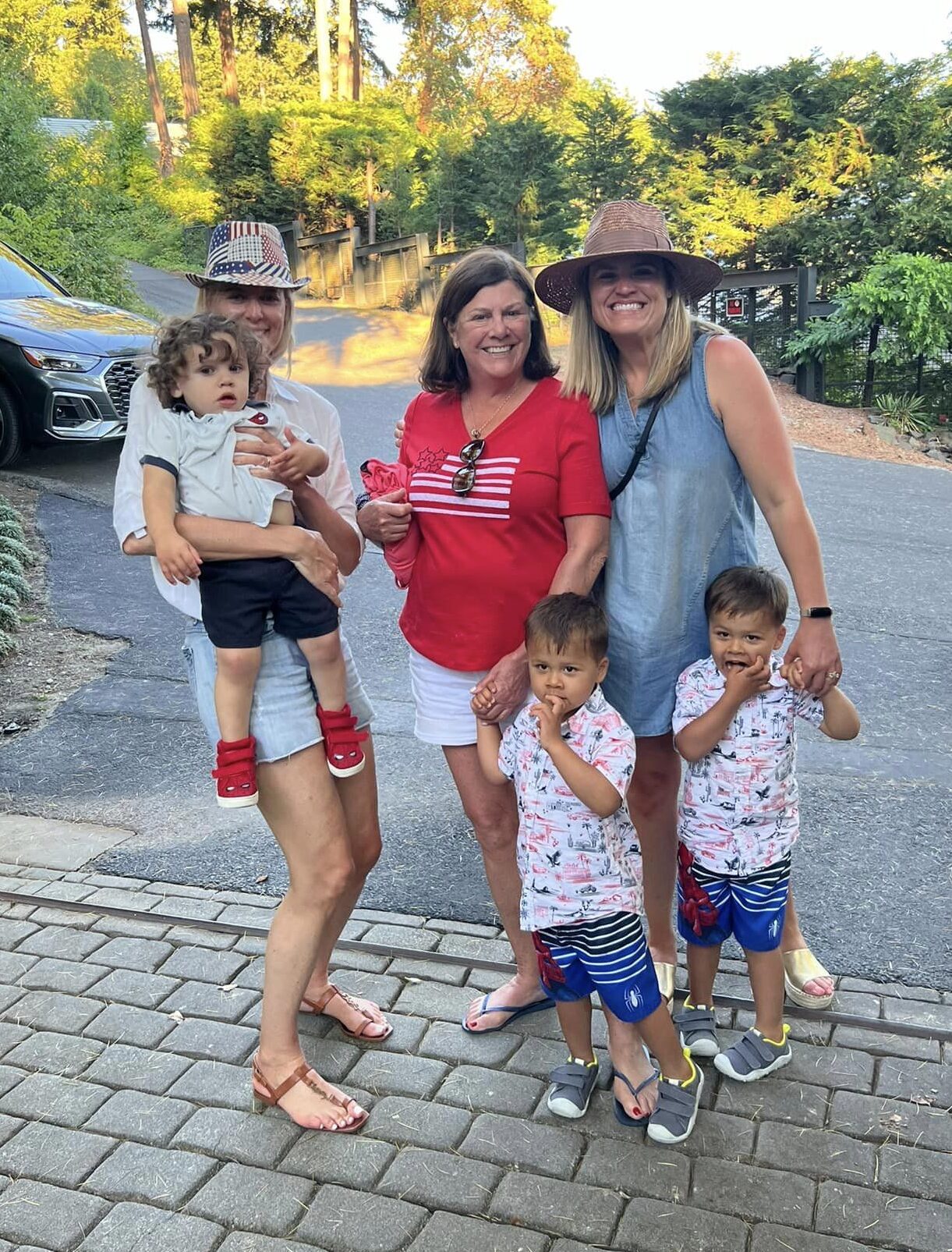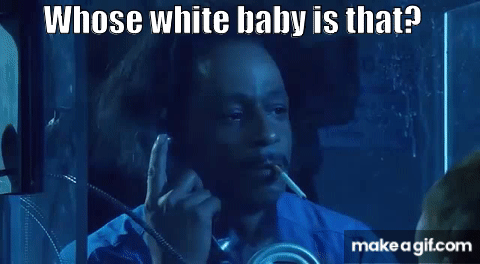My son, Chayton, doesn’t look like me, and I don’t always want to be asked about the “white baby” with me at the airport or grocery store. It reminds me of the scene in School Dance where Katt Williams says to Tiffany Haddish’s character, “Whose g*dd**n white baby is that?” Sometimes, I just want to be his mom without any question. He’s also not solely white, either – he’s multiracial.
As someone who advocates for the fertility rights of cancer patients, however, I want to normalize different fertility journeys, including gestational surrogacy, embryo donation, and adoption. Cancer takes so much from us – it shouldn’t close off the pathways to parenthood as well. That’s why I’m usually open to answering people’s questions, as long as they come from a good place and are asked with genuine curiosity and respect. There’s a lot to learn about fertility treatments and terminology, with many layers, and people want to understand how things work and what things mean.
I’ve written and spoken about how my Cervivor Baby was born in 2022 after a decades-long fertility journey. Now, there are even more Cervivor babies out there, like five-month-old Eito. His parents, Anna and Soto Ogo, froze their embryos before Anna began cancer treatments in 2021 and eventually had Eito through gestational surrogacy (read Anna’s full Cervivor Story). I got to meet Eito for the first time at a surprise birthday dinner in Seattle last month and had the joy of hearing his and Chayton’s baby babble and squeezing those scrumptious rolls.

I also recently reunited with my embryo donor and fellow Cervivor Ginny Marable, when Chayton and I spent time with her mom and other family members over July Fourth. They are so accepting of non-traditional families and welcome everyone with open arms. My biggest takeaway from my time with them was that family is family.
Answering people’s FAQs
While I generally don’t care what people think about my fertility or life choices, some comments are frustrating. For example, when people express concern that it might be “confusing” for Chayton and Ginny’s twin sons, Emmett and Grant, to be close. (Ginny and her husband Sean preserved their embryos before her cancer treatment in 2017 and welcomed the twins in 2021. You can read Ginny’s full Cervivor Story.)
The reality? Our families are open and honest; we’re not hiding anything. The kids love each other. We’re incredibly grateful for all three of our children. We absolutely love our version of a modern family.

Here are some of the frequently asked questions I get about our Cervivor babies:
Do you keep in touch with Ginny? Yes, I do. We talk and text regularly. People might be surprised at how often we stay in touch.
Do you have a close relationship with her kids? Yes, they call us Auntie Tamika, Uncle Rocky, and Cousin Chayton, and we call them Auntie Ginny, Uncle Sean, and Cousins Grant and Emmett.
Whose sperm was used? The embryo was created using Ginny’s egg and Sean’s sperm, and we “adopted” their fully developed embryo.
Did Ginny carry the baby? No, a surrogate carried the baby. The next question I usually get is, “What color was the surrogate?” or “Was the surrogate white?” She was. Although I tried to find a surrogate of color, it didn’t work out in time. Hello, older mom here – the clock was ticking! It’s important to highlight that Black surrogates exist, though, and there is a need for more diversity in both surrogacy and sperm donation.
How does Ginny feel seeing him? Ginny always tells me, “That’s your child.” She’s supportive and loving – a proud auntie.

Support other Cervivor babies
In January, at the 2024 Cervical Cancer Summit Powered by Cervivor, Inc., we launched the Virginia “Ginny” Marable Cervivor Baby Gift Fund. This fund is dedicated to supporting families facing fertility challenges, specifically those pursuing fertility treatments after cancer. In February, Anna and Soto celebrated Eito’s 100th day – a tradition in some Asian cultures – and generously matched all the money given to Eito for the Cervivor Baby Gift Fund.
If any of our stories move you, please consider donating to offer hope and financial assistance to Cervivors navigating their fertility journeys. Everyone deserves the opportunity to reach their dream of being a parent.
xo
